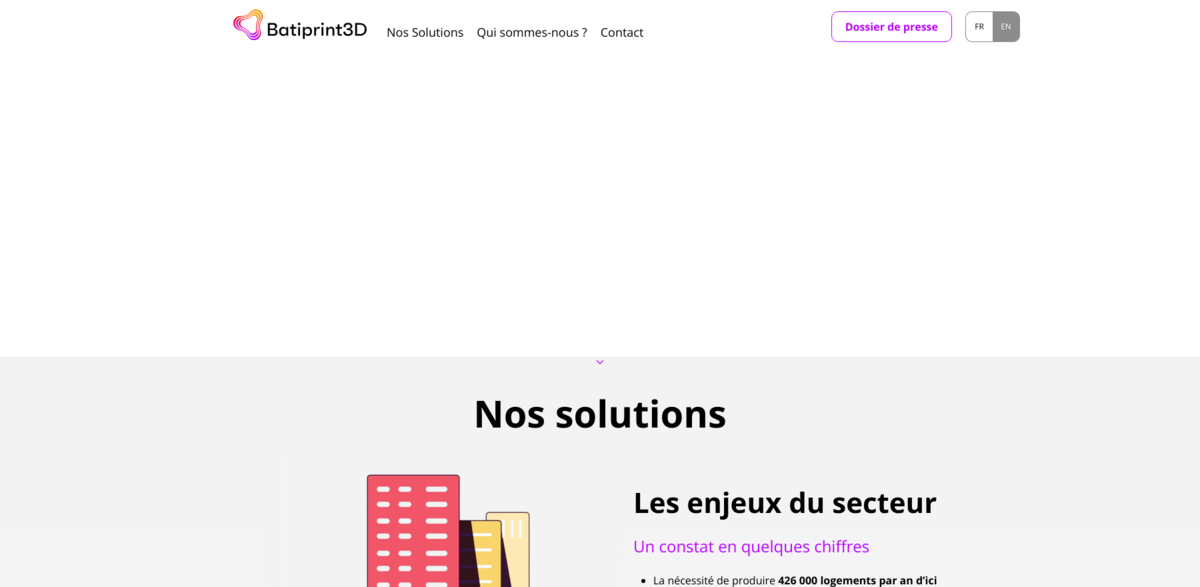What is Batiprint3D?
Batiprint3D develops and commercializes innovative robotized solutions tailored for the construction industry. At its core, the project revolves around an autonomous robotized system designed specifically for the external thermal insulation of façades. Imagine a system that operates with high productivity, ensuring top-notch quality execution every time. Off-site, this system is programmed using digital data from the building itself. Then, on-site, it’s operated by just one person from the ground, moving smoothly along a mast structure that runs up and down the façade, spraying insulating material directly onto the external walls. It’s a game-changer for building renovation sites, making the process faster, safer, and more efficient.
Main Benefits and Key Figures
Let’s talk numbers and why this matters:
- 426,000 housing units need to be produced annually by 2035 to meet France’s population demands (Insee – France).
- The construction sector churns out a staggering 240 million tons of waste each year (Ademe).
- Buildings gobble up more than 40% of total energy consumption and are responsible for 36% of greenhouse gas emissions (European Commission).
- Europe faces the challenge of renovating over 35 million buildings by 2030 (European Commission).
These figures highlight the urgent need for smarter, greener construction solutions. Batiprint3D’s robotized insulation system directly addresses these challenges by improving energy efficiency and reducing environmental impact.
Sector Challenges Driving Innovation
The construction industry is at a crossroads. Buildings consume a huge chunk of energy and contribute massively to greenhouse gas emissions. The European Commission’s 2020 strategy, “A Renovation Wave for Europe,” aims to at least double the annual energy renovation rate by 2030. This isn’t just about cutting emissions; it’s also about creating green jobs and boosting economic growth. Batiprint3D steps into this picture by offering a solution that accelerates renovation sites, making them more productive and environmentally friendly. It’s about meeting the dual ambition of energy gains and economic growth head-on.
Innovative Autonomous Thermal Insulation System
Batiprint3D’s autonomous external thermal insulation system (ITE) is unique. It uses an automated process to spray expansive foam directly onto façades, ensuring consistent quality and speed. The system’s industrial-standard processes guarantee execution quality, while its design allows for cost control and efficient task management. What’s more, it operates with a reduced team, thanks to its simplified and secure implementation. This means fewer people on site, less noise, and less visual disruption. Plus, it optimizes environmental impact by reducing material quantities, waste, and transportation needs. It’s a smart, sustainable approach to thermal renovation.
Mobile Micro-Factory: Revolutionizing Construction
Another exciting innovation from Batiprint3D is the mobile micro-factory. This unique mobile system prints insulating formworks in expansive foam right on-site for wall elevation. It offers architects and builders unprecedented freedom to create formworks in simple or complex shapes, thanks to its industrial processes. Speed is a major plus here, with rapid execution boosting productivity. The system also simplifies implementation, reducing uncertainties and costs. Environmentally, it cuts down thermal bridges through double-skin formwork and minimizes waste and transportation by producing directly on-site. Plus, it supports the evolution of construction practices by enhancing skills, valuing teams, and reducing work-related strain and accident risks.
Project Impact on Sustainable Development Goals (SDGs)
- SDG 7: Affordable and Clean Energy – by improving building energy efficiency.
- SDG 9: Industry, Innovation, and Infrastructure – through robotized, innovative construction solutions.
- SDG 11: Sustainable Cities and Communities – by accelerating building renovations and enhancing housing quality.
- SDG 12: Responsible Consumption and Production – via waste reduction and circular economy promotion.
- SDG 13: Climate Action – by reducing greenhouse gas emissions from buildings.
Looking Ahead: The Future of Construction
Batiprint3D’s solutions are more than just technological marvels; they represent a shift in how construction sites operate. By combining automation, digital programming, and on-site production, the company is paving the way for a future where building renovation is faster, greener, and safer. As the demand for housing grows and environmental regulations tighten, such innovations will be crucial. The construction industry is evolving, and with projects like Batiprint3D, it’s moving towards a smarter, more sustainable future.





















